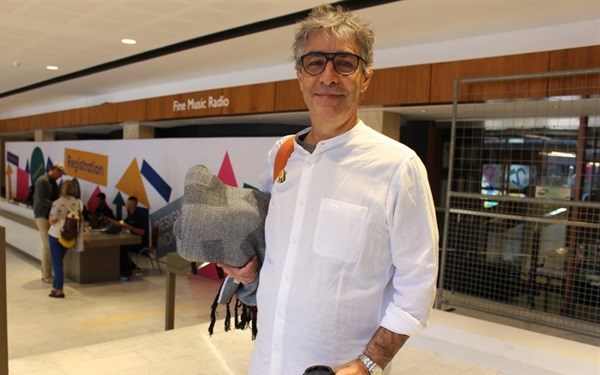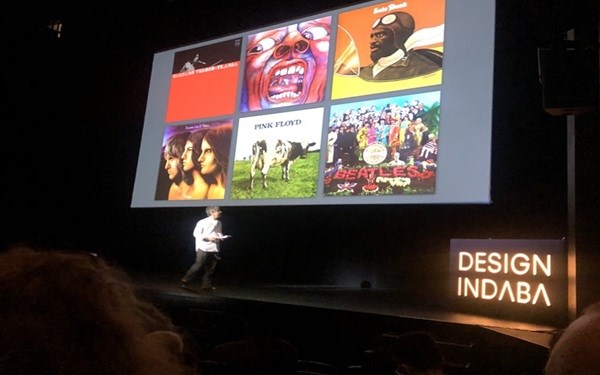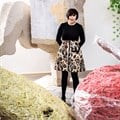#DesignIndaba2019: From algorithms to Al Gore
Few more appreciative audiences exist than the delegates of Design Indaba conference, who gather annually at the Artscape Theatre in Cape Town to debate and celebrate all aspects of design.
Dances with type
The fact that speakers South African born Noel Pretorius and María Ramos from NM type foundry are young and collaborate remotely between Sweden and Spain perhaps imbues the ancient art of typography design with more contemporary relevance.
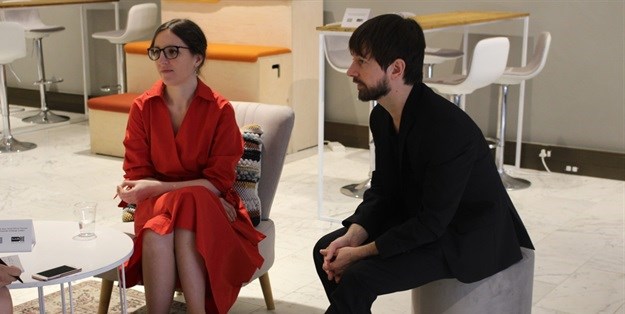
X-height is the X-factor
Insights such as the fact shared by Ramos that most sans serif fonts have a large x-height, which can make copy intensive pages look very dark, provide the kind of information critical in an era where the digital or printed word fights for decreasing reader attention spans. Maybe things are just too hard to read. NM fonts such as Kinetic inspired by Alexander Calder mobiles open up letterforms and lines spaces with a playful lightness to provide corresponding clarity of communication.
Fonts commissioned of NM by Jägermeister and Design Indaba themselves, demonstrate how a typeface can provide an important brand voice that talks directly to audiences – in the case of Jagermeister’s distinctive 45 degree-angled packaging and communication type and Design Indaba’s new flagship intro titles, positioning both organisations at the forefront of super cool design.
Movement, the gorgeous, loopy, 11-weight font family which is the proud product of the collaborative project between Design Indaba, NM type and dancer Andile Vellem, who traced out the letterforms with his own body movement, is freely available and designers are invited to share future projects making use of it. Like the dance moves that inspired it, it’s sensuous, organic and variable, so be inspired at www.nmtype.com/movement.
Images and sound together forever
Sao Paulo-based Kiko Farkas starts his presentation with a map of Gondwana the landmass that once existed when Brazil and Africa were one and perhaps in some way are still kind of connected.
Showing a slide of 1970’s record cover designs, he comments on how the images and sound will stay together in his mind forever. While the art of iconic album covers may be lost, the principles of the power of design to imprint itself on us remains.
Farkas explains his inspiration derived from being present in the world. Everything that we see and feel, the changing colour of the sky, food and drink, temperature, perfumes, wind, are how he builds his repertoire and how he works. Examples in poster designs for Sao Paulo Symphony Hall show flowers, butterflies and pattern used to evoke concepts such as harmony and melody, rather than the usual things associated with music such as actual musical instruments.
He confesses to being fascinated by fire transforming photoshop images of flames to the colour of water to create covetable statement art posters for Indaba delegates.
Algorithms solve waste crisis
From graphic design to design for sustainability, Tokyo-born Kye Shimizu’s Algorithmic Couture uses machine learning to arrive at solutions to the problem of waste created by the fashion industry. A rich history of sustainability in Japanese culture is explained.
For example, in its straight cut pattern, which generates no offcut waste in the design process, the classic kimono is both beautiful and sustainable, while traditionally samurai and ninja clothing were made from scraps. In addition, using the kimono’s one size fits all property as inspiration could avoid overproduction of creating and selling many size points and how we think about the future of fashion.
Al Gore-isms
British design critic, Alice Rawsthorn OBE, warns that bad design can affect our lives as much, if not more than good, culminating in an extreme example of how design can influence futures.
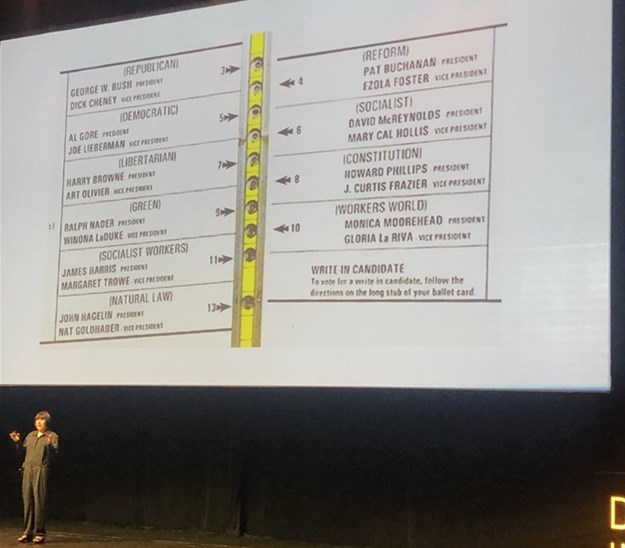
How they got the design of the ballot paper used in the 2000 US presidential election in Florida so wrong remains a mystery. Not wanting to have a paper too long, the designers produced a confusing array of arrows pointing to the names of the candidates, among whom were George Bush, Al Gore and ultra-right winger Pat Buchanan. To this day many are convinced that the layout confused voters and that Al Gore lost the election by a narrow margin due to bad design.
Interestingly Rawsthorn’s take out is that the consequences of bad design could get worse if we do not get to grips with the necessary design thinking heralded by future AI-powered software and other technologies.
She identifies that designers are becoming more ambitious and influential – economically, socially, environmentally, politically and economically.
Humans are 99% algorithms
Belgian designer and acting Indaba MC, Lucas De Man calls himself a creator, in the domain of art projects and urban actions for the public space.
Possibly influenced by the writing of Noah Harari, De Man states that animals and humans are 99% algorithms and it is only the 1% that makes us human. It is this humanity that is celebrated at events like Design Indaba. Will our abilities to create, appreciate beauty, smell flowers, feel warmth and water, love and dance, act as a hedge against becoming irrelevant to AI technologies?
This year art blankets replaced jewellery as Indaba speaker gifts, influencing behaviour as instead of hugs or handshakes, presenters draped recipients in gestures of appreciation - a lot less awkward all around - also warmer, fuzzier, more emotive, acknowledging the shared aspects of our humanity, perhaps in the process of bracing itself for more algorithmic futures.








